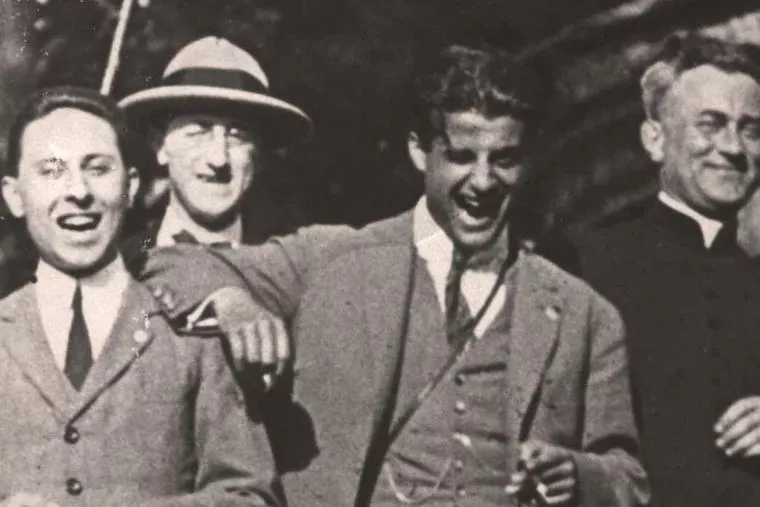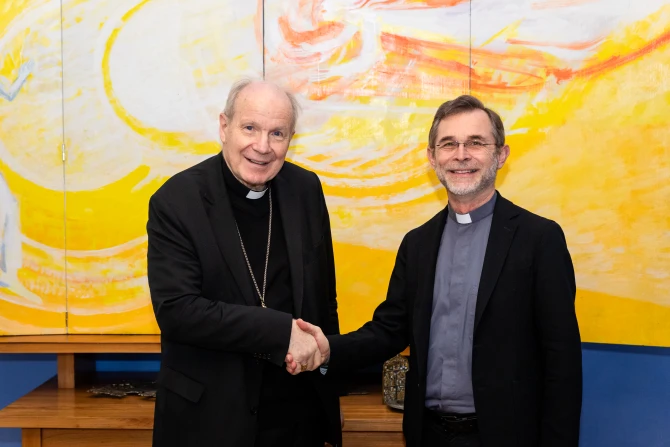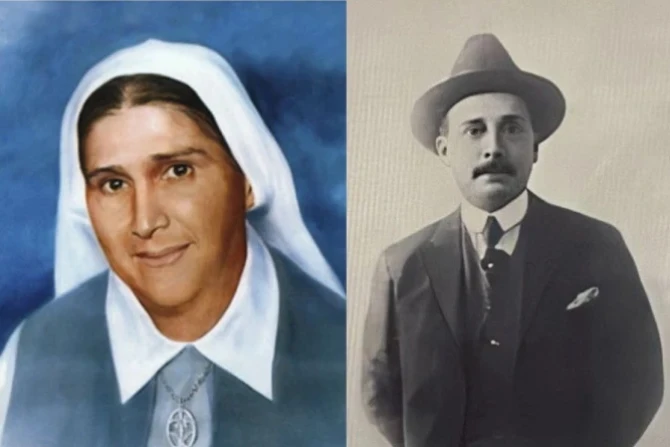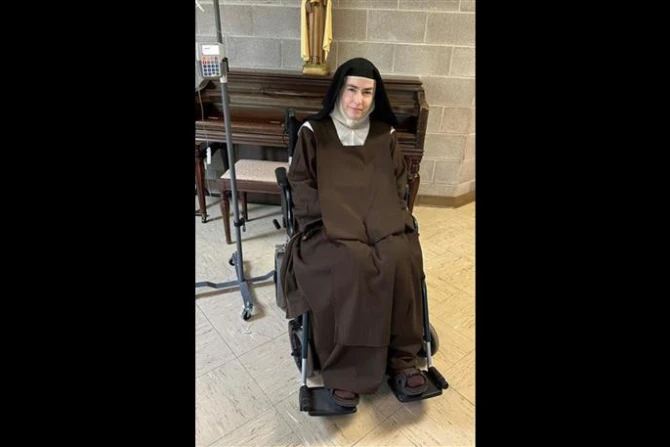Dapper indeed he was, and yet his fashion choices point to something deeper.
SIGN UP FOR OUR NEWSLETTER HERE
Blessed Pier Giorgio Frassati’s canonization Sept. 7 will not simply honor a young man of charm, wit and tenderness who cherished fellowship, sports and family. It will celebrate a life where wealth was worn lightly, style reflected devotion to God and the poor, and radiance flowed from love of God.
Dylan Staub, 21, of Gettysburg, Pennsylvania, called Frassati “a dapper fella” during the Jubilee of Youth in Rome, where the soon-to-be-saint’s body was translated for veneration, when EWTN Vatican correspondent Courtney Mares asked him about Frassati’s style.
Dapper indeed he was, and yet his fashion choices point to something deeper.
Born in 1901 into one of Turin’s most prominent families, Frassati’s holiness of life demonstrates that wealth need not be an obstacle to sanctity if directed toward God’s glory — and that outward dress can express a visible sign of dignity and virtue. Frassati specially possessed the grace of a deep love for Christ that quietly shaped everything he did.
Blessed Pier Giorgio was deeply involved in Catholic Action, served the poor, and nurtured a profound love for the Eucharist and the Blessed Virgin Mary. His sanctity was woven into his everyday life, whether in the streets of Turin or in the Alpine mountains.
Because he gave without measure, at just 24 years old, he contracted polio, likely from the poor he was assisting, and died shortly thereafter.
Those who have studied his life see in his clothing in particular choices that are a reflection of his interior life: holiness, piety and seriousness of devotion, but also joyfulness, fun and personality.
Wealth and Detachment
Frassati’s life — and even his style — was an integrated witness as a student, friend and servant of the poor.
“Born into Turin’s upper class, Frassati’s plain ties and tailored suits were appropriate for his station and met the standard expected at university, in the mountains, or serving the poor,” Clint Branam of Catholic Men’s Shop(@catholicmensshop) told the Register. “In Catholic Europe, quality and beauty were intertwined and treated as moral goods: fine materials, clean lines and good fit honored the body as a temple.”
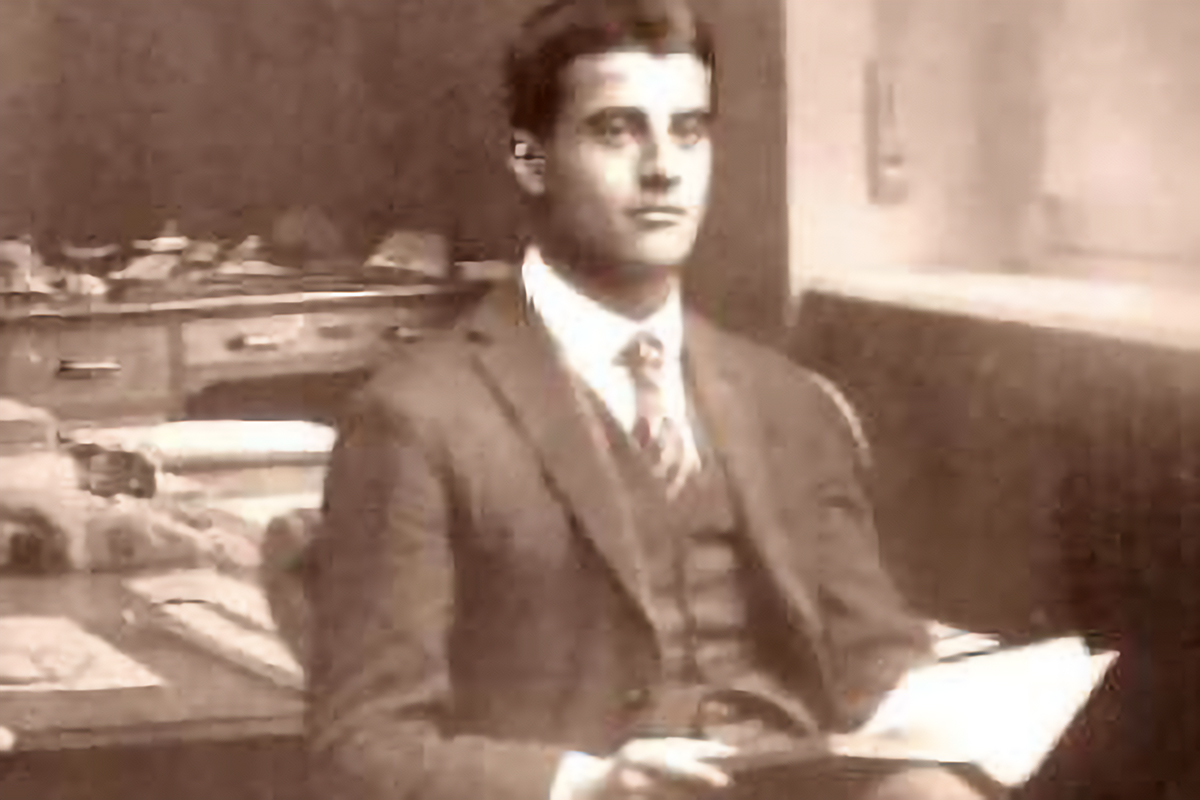
It is worth considering, in our own time, Branam said, “what it means to clothe ourselves in the good, the true and the beautiful.”
When Veronica Marrinan, co-founder of Litany NYC (@litany.nyc), a Catholic ethical fashion company venerated Frassati’s incorrupt body during its stay in Rome during the Jubilee of Youth and the associated events for Catholic influencers, she came away with a renewed understanding of his background.
“I hadn’t really realized until recently — when we were in Rome and visited his body — how affluent his family was and how much that affected his story,” she said. “You might think, ‘Oh, back then everyone dressed like that,’ and some people did, but not everyone. At that time, clothing wasn’t produced on the full industrial scale yet — mass production was still fairly recent.”
This insight made her look differently at the photographs of the holy young man.
“Realizing this made me appreciate even more the photos of him in simple hiking gear or the ones where he’s being silly and has got his jacket unbuttoned, just having a great time. Those moments really show his personality and his mission coming through, despite the circumstances he was born into,” she said.
Even something as personal as clothing, Marrinan noted, was subject to his sense of detachment.
“Clothing is so significant and personal,” she said. “Our bodies and souls will be reunited at the resurrection of the body, so what we wear is not without meaning. For him to give away such personal items as clothing shows real generosity.”
Symbolism in Style
Mary Harper, founder of LiturgicalStyle.com (@liturgicalstyle), and author of the forthcoming book What the Saints Wore, said Pier Giorgio Frassati’s wardrobe reflected both his simplicity and his sense of purpose.
“His mountain gear and ski pants highlight the grand adventure of holiness — to seek sanctity by realizing joy in the ordinary,” Harper said. “He dressed each day for the task at hand — a man of practicality — to adventure, to preach, to serve, to love, to play, to pray.”
That practicality was inseparable from generosity.
“He would sooner give away new clothes to the homeless or poor before replacing shoes that were getting too small and had holes,” she said. “He’s an example for us today to reject the tendency of overconsumption with fast fashion.”
Harper relates how family recollections confirm this spirit. She related how Pier Giorgio’s sister Luciani Frassati wrote in one anecdote about a worn-out coat: “Thrift was a way of life. Here is an example from our aunt to Mama: ‘I have had to send Pier Giorgio’s gray overcoat to Celeghin. It is all worn out pockets, cuffs — belt turned in green and the worst part of it is that he has not got the same material to repair it. But he will try to make adjustments by taking off the pockets, making cuffs and all for fifty lire. … Let us hope that the fine weather will come: [T]hen he can go out in his jacket. But there is another problem. He cannot go on wearing patched clothes. He goes through them in no time.’”
Even his most recognizable shirt carried deeper meaning.
“We often connect him to the blue striped shirt in that famous photo of him smoking a cigar on a snowy slope,” Harper explained. “Historically, sailors wore blue stripes for visibility if a man went overboard. Some sources state that over time Italians tended to wear blue stripes as a sign of unity but also as devotion to Mary — Stella Maris, Star of the Sea.” So while Pier Giorgio would have worn it as a common shirt in his culture, it also quietly highlighted his Marian devotion.

Virtue on Display
Writer and Catholic content creator Eliza Monts (@elizawritesthings) sees in Frassati’s clothing another virtue: modesty.
“In observing Pier Giorgio’s personal style, I’m struck by his modesty in how well his clothing blends in with that of his friends and community,” Monts said. “This virtue is a gift to be cultivated with the Holy Spirit that accounts for our situational circumstances and cultural context.”
She points out that context shapes how we read photographs. “A photo of him wearing a suit and chain pocket watch may look quite dressed up to the modern eye … but the men around him are also in full suits — indicating it was a social event where that attire was customary. In another photo, Pier Giorgio is dressed down for skiing with friends and again blends in with them nicely — a situation where a suit would have been less modest, given its inability to be functional for the sport.”
“He dressed in a way that blended in with his family’s social class, but we know of his detachment from his clothing in how he, as a child, immediately gave his shoes to a boy who had none. … Pier Giorgio shows us how to reflect humility and modesty even as someone with material wealth — by finding freedom in his total dependence on God,” Monts observed.
She added, “Here, he models the beatitude, ‘Blessed are the poor in spirit, for theirs is the kingdom of heaven’ (Matthew 5:3).”
These choices in dress and demeanor weren’t accidental. They reflected a deliberate desire to live every aspect of life — from the way he prayed to the way he dressed — as a witness to the Gospel.
As Christine Wohar, executive director of FrassatiUSA (@frassatiusa) and author of Finding Frassati: And Following His Path to Holiness (EWTN Publishing), said, “Pier Giorgio was very conscious of the impact his behavior had on others. He was careful to reflect his values and upbringing with his language, clothing and actions.”
“This is summed up by a Jesuit priest, Father Giovanni Mensio, who knew him from when he was a boy: ‘Pier Giorgio had an elegant way about him. He was courteous, refined, dignified and very modest. … His language was very clean, demonstrating a sincere piety,’” Wohar recounted.
He was an exemplar and encouraged others in such witness, she also explained.
“In a speech he gave to Catholic youth, Pier Giorgio spoke of the importance of what he called ‘the apostolate of good example.’ He said, ‘We Catholics must strive to have our whole life guided by Christian moral law.’ He specifically did not want to waste his youth, as he said, ‘from the spiritual side,’ and was always willing to hold his friends accountable when they went astray. Likewise, he was always willing to accept admonitions from them. Although he did not concern himself about human respect, his goodness, appearance and kind demeanor inspired it.”
She added: “He was unconcerned about his nice shirts becoming soaked with sweat when he carried heavy packages to the poor in their squalid homes.”
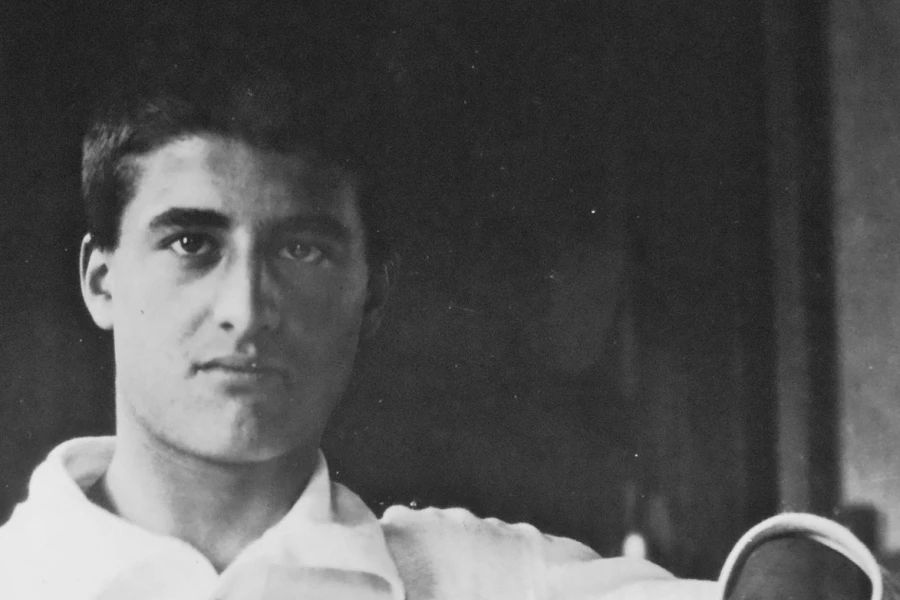
Radiance of Love
Frassati shows that holiness can flourish in the midst of studies, friendships and everyday work or play. He reminds us that what we wear — and how we wear it — can quietly proclaim the Gospel and that, like a fine-tailored coat, holiness is meant to be lived in until it bears the wear of love.
Consequently, his masculine holiness radiates.
“While there is something objectively beautiful and striking about the appearance of Blessed Pier Giorgio Frassati, what is most striking is his radiance,” said Emily Malloy (@theemilymalloy), food and floral design editor at Theology of Home.
“At first glance, one notices his clean-cut, masculine characteristics, but it’s his smile that shines with a loving authenticity and draws one in. Instantly, one senses that this man owes his confidence to a recognition of and gratitude at being a child of God.”
That identity, she explained, shaped the way he lived. “It permitted him to withhold nothing from God — living in true charity and generosity, perfectly embodying St. Ignatius’ prayer to give without counting the cost.”
In the end, Malloy said, “What made him most striking was not so much those worldly things that catch our eye, but the love that radiated from his being.”
This article was originally published by NCRegister.

